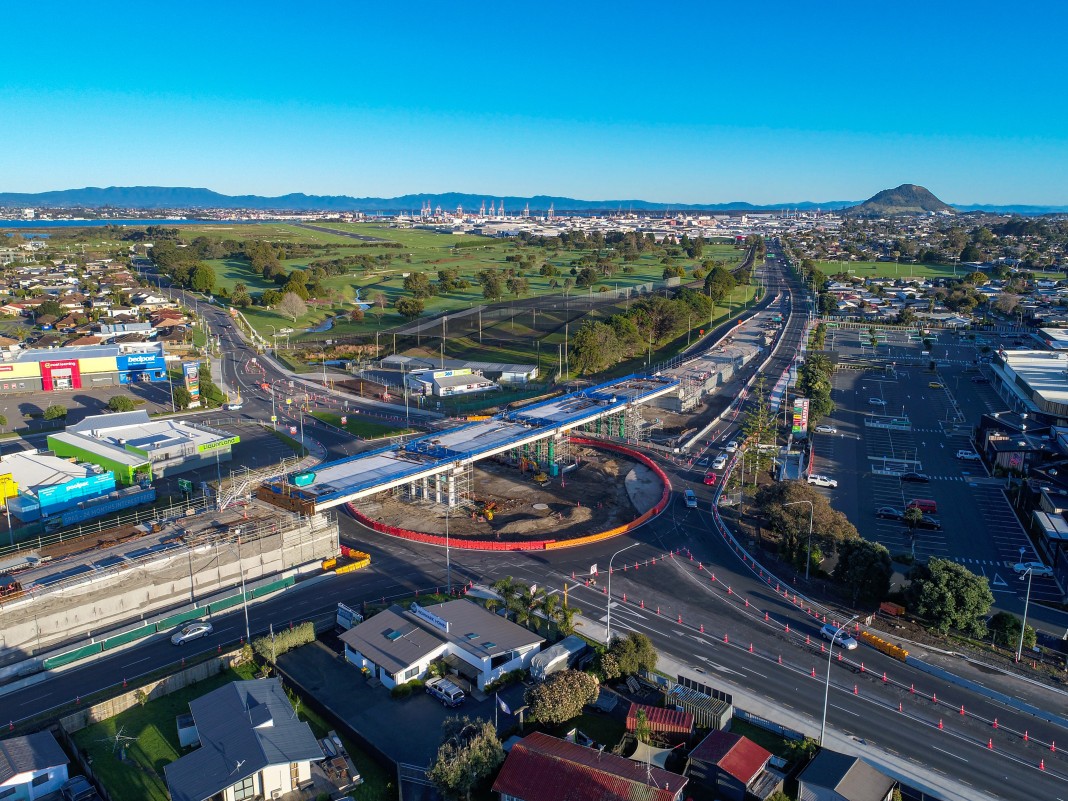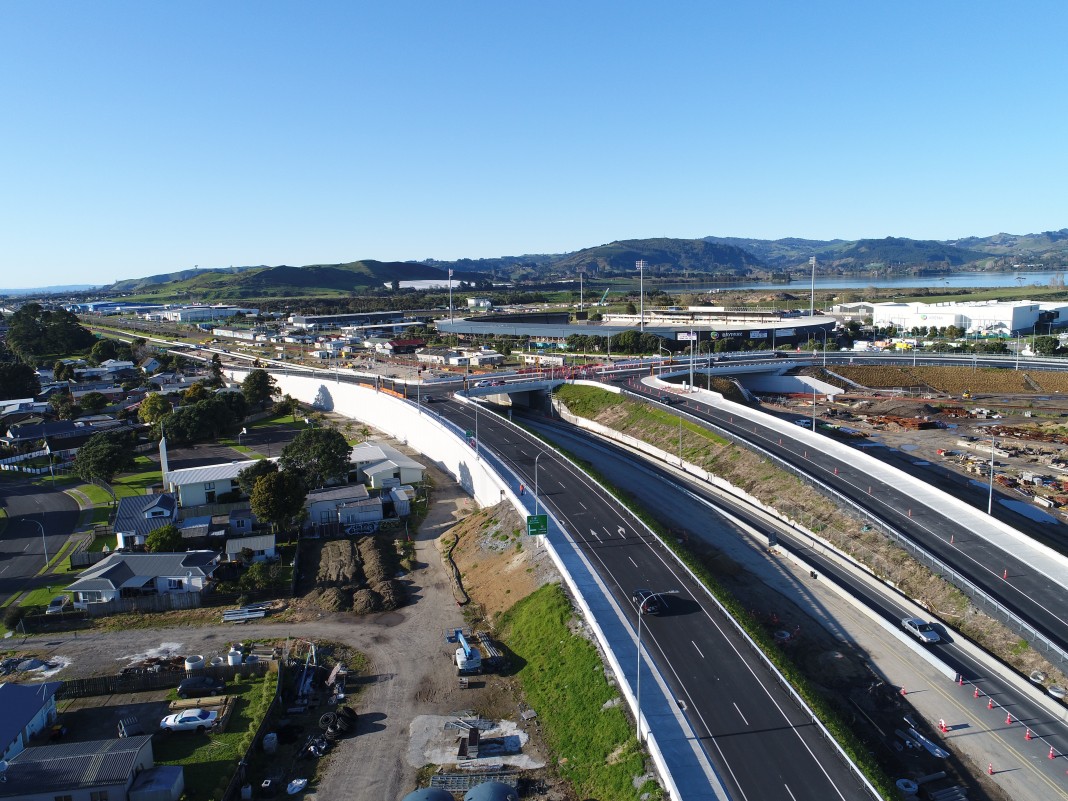For Jo Wilton of Waka Kotahi, and most of the Bay’s motoring public, next Christmas will not be arriving soon enough. Next December marks the planned opening of the Baypark to Bayfair Link roading project separating local, state highway and rail traffic, to complete the state highway two eastern corridor system.
While uncertain about the $260 million dollar project’s absolute final cost, as regional manager for infrastructure delivery Wilton has confirmed December 2023 is a “definite yes” for its opening date.
Having commenced in 2015, the 1.7km stretch of highway marks one the most expensive projects undertaken in recent years for its relatively short length, with one of the longest construction periods.
For a cost comparison, the Tauranga Northern Link (TNL) at 6.8km has been costed at $655 million. Over the Kaimai range the recently opened 22km of the Hamilton expressway was completed on time and under budget at $800 million. The completed Hamilton and Huntly sectors of the Waikato expressway total 37km and were also both started in 2015.
The opening date for the Baypark-Bayfair project was pushed out two years when an extended pedestrian underpass was retrospectively added, also adding a further $26 million to the bill. The underpass will enable pedestrians to move under both Maunganui Road and SH2 and construction is expected to be ongoing while it is also in use.
However, Wilton said the underpass’s construction also necessitated some major additional geo-technical work when previously undetected pumice deposits required extra underground strengthening.
The project’s original quoted construction cost was $120 million, but Wilton said that had failed to include the costs of purchasing adjacent properties, while the additional below ground strengthening work and underpass had also added to costs.

But she has been heartened by the visible above-ground work now moving at pace on the project, including the installation this winter of bridge beam installations at both the northern end at the
Bayfair flyover, and the second state highway 2 bridge.
Spans for the Bayfair flyover have also been installed between April and August. In total 46 locally manufactured bridge beams, often weighing up to 54 tonnes have been placed.
Permanent concrete barriers have also been poured in recent weeks around the base of the flyover’s southern ramp using a machine that shapes fresh concrete and forms the barriers in its wake.
Two lanes on Girven Road between Bayfair roundabout and Gloucester Road are also expected to be restored and the shopping centre’s first Girven Road entrance and footpath in the area is due to be completed by late September. Work is also continuing on the Truman Lane walking and cycling connections, the Papamoa off-ramp and state highway road under the interchange.
Wilton said every roading project has its own unique challenges, but for the Baypark-Bayfair project the fact it is a “brownfields” project was one of them. “Working in an existing corridor that already has traffic and services, a state highway that cannot be closed makes work progress more challenging. Staging your work has to be done carefully, and safely for workers and motorists.”
She said given a choice any engineer would prefer a “greenfields” project, such as most of the TNL and Waikato Expressway projects have been. Traffic volumes through the site are significant at about 36,000 a day, less than the Auckland motorway peak but ahead of Waikato Expressway at 25,000 a day.
Once fully opened the project will facilitate the seamless movement of traffic coming from the Tauranga Eastern Link (TEL) into Mount Maunganui or via state highway 29a to Tauranga, with separation from the rail line and between local and highway traffic.




